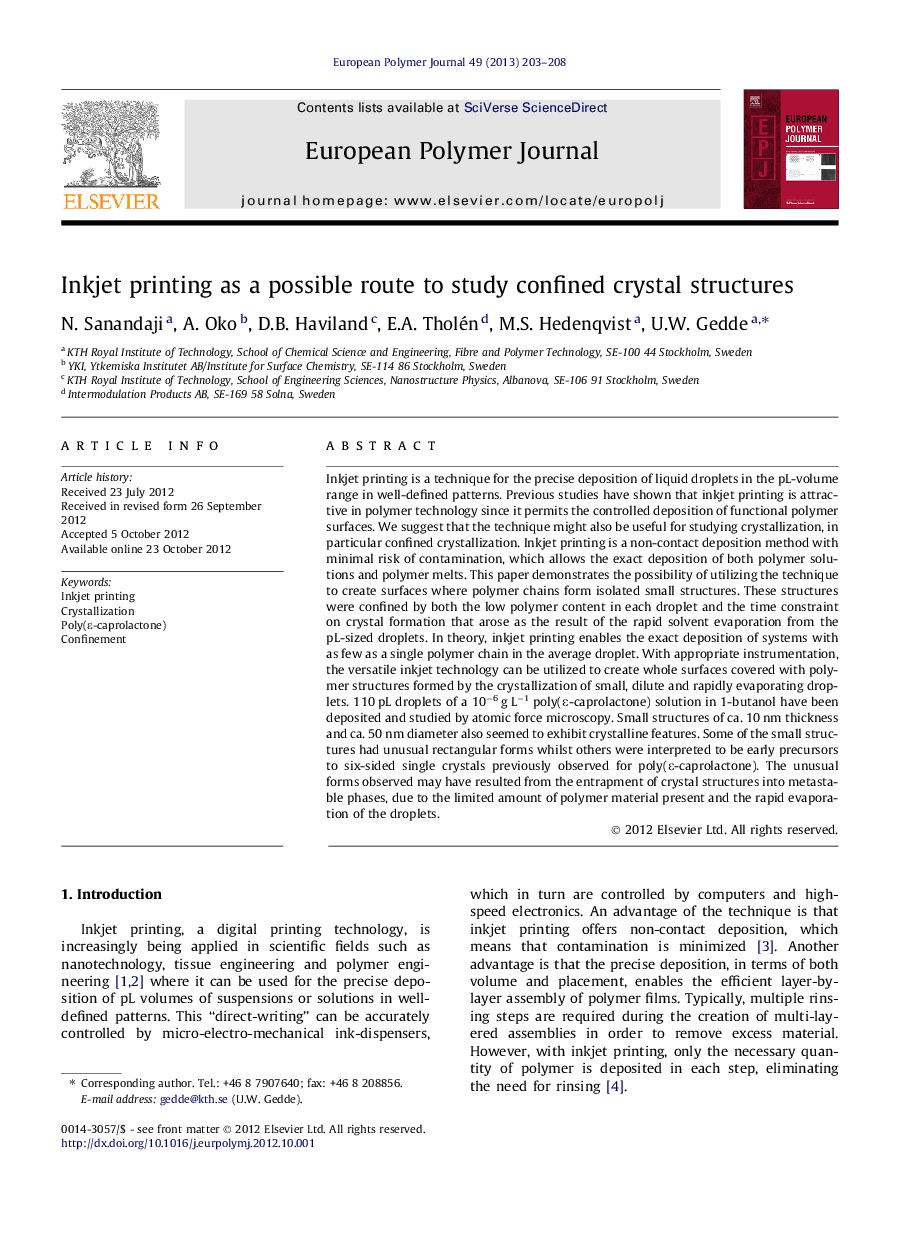| کد مقاله | کد نشریه | سال انتشار | مقاله انگلیسی | نسخه تمام متن |
|---|---|---|---|---|
| 1395891 | 984142 | 2013 | 6 صفحه PDF | دانلود رایگان |

Inkjet printing is a technique for the precise deposition of liquid droplets in the pL-volume range in well-defined patterns. Previous studies have shown that inkjet printing is attractive in polymer technology since it permits the controlled deposition of functional polymer surfaces. We suggest that the technique might also be useful for studying crystallization, in particular confined crystallization. Inkjet printing is a non-contact deposition method with minimal risk of contamination, which allows the exact deposition of both polymer solutions and polymer melts. This paper demonstrates the possibility of utilizing the technique to create surfaces where polymer chains form isolated small structures. These structures were confined by both the low polymer content in each droplet and the time constraint on crystal formation that arose as the result of the rapid solvent evaporation from the pL-sized droplets. In theory, inkjet printing enables the exact deposition of systems with as few as a single polymer chain in the average droplet. With appropriate instrumentation, the versatile inkjet technology can be utilized to create whole surfaces covered with polymer structures formed by the crystallization of small, dilute and rapidly evaporating droplets. 110 pL droplets of a 10−6 g L−1 poly(ε-caprolactone) solution in 1-butanol have been deposited and studied by atomic force microscopy. Small structures of ca. 10 nm thickness and ca. 50 nm diameter also seemed to exhibit crystalline features. Some of the small structures had unusual rectangular forms whilst others were interpreted to be early precursors to six-sided single crystals previously observed for poly(ε-caprolactone). The unusual forms observed may have resulted from the entrapment of crystal structures into metastable phases, due to the limited amount of polymer material present and the rapid evaporation of the droplets.
Figure optionsDownload as PowerPoint slideHighlights
► For the first time utilizes inkjet printing to explore confined crystallization.
► Confinement achieved by low polymer content in each droplet and time constraint on crystallization.
► Even small structures of 50 nm diameter were shown to exhibit crystalline feature.
► Unusual eight-sided and rectangular crystal structures observed.
Journal: European Polymer Journal - Volume 49, Issue 1, January 2013, Pages 203–208